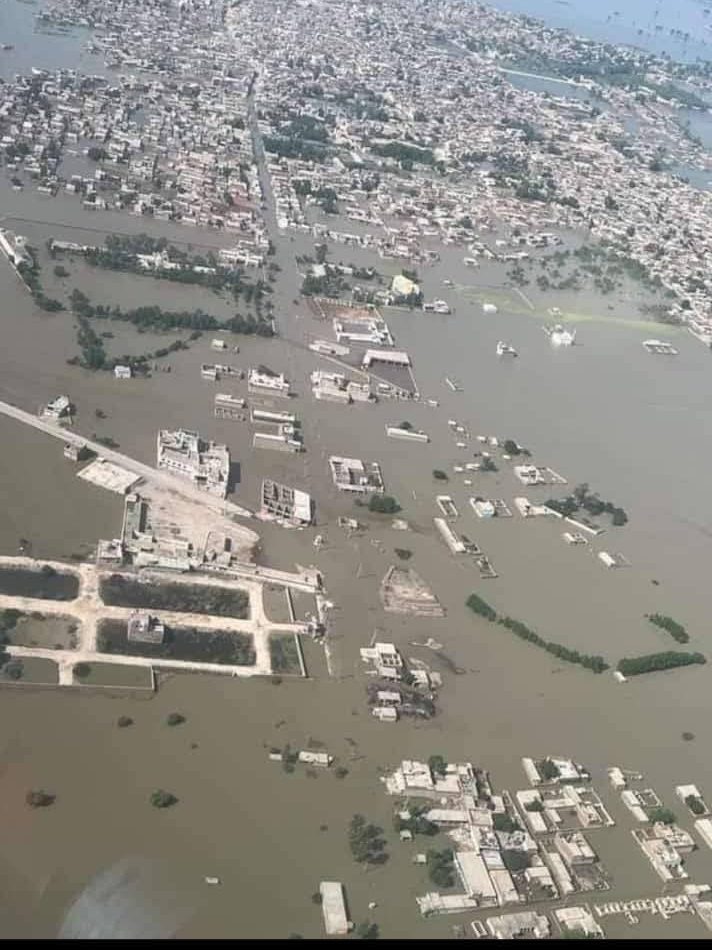
Both kinds of disasters – natural as well as unnatural, exposed the highly influential and corrupt elements – the entire government machinery, the ministers, members of parliament and provincial assemblies, leaders of ruling as well as opposition parties, bureaucrats, subordinate officials at district administrations and the police.
By Nasir Aijaz
The AsiaN Representative
Islamabad
No doubt the unprecedented torrential rains that lashed the country continuously for over two months were a natural disaster but the way the millions of Pakistanis were devastated was in fact an unnatural disaster caused by the human acts of omission and commission. Both kinds of disasters – natural as well as unnatural, exposed the highly influential and corrupt elements – the entire government machinery, the ministers, members of parliament and provincial assemblies, leaders of ruling as well as opposition parties, bureaucrats, subordinate officials at district administrations and the police, whose acts inundated more than one third of the total area of country and brought death and destruction for the masses.
Let me elaborate the point.
Pakistan Meteorological Department had predicted abnormal monsoon rains two months ahead of the start of the rains and had duly warned the government on May 10 for taking precautionary measures but neither the federal government nor any of the provincial governments heeded to it. The ruling coalition parties and the opposition remained engaged in fight pushing the country towards the whirlwind of political intrigues which ultimately plunged the nation into the whirlpool of deluge that caused deaths of scores of humans, damage to the millions of properties and displacing the people in equal numbers.
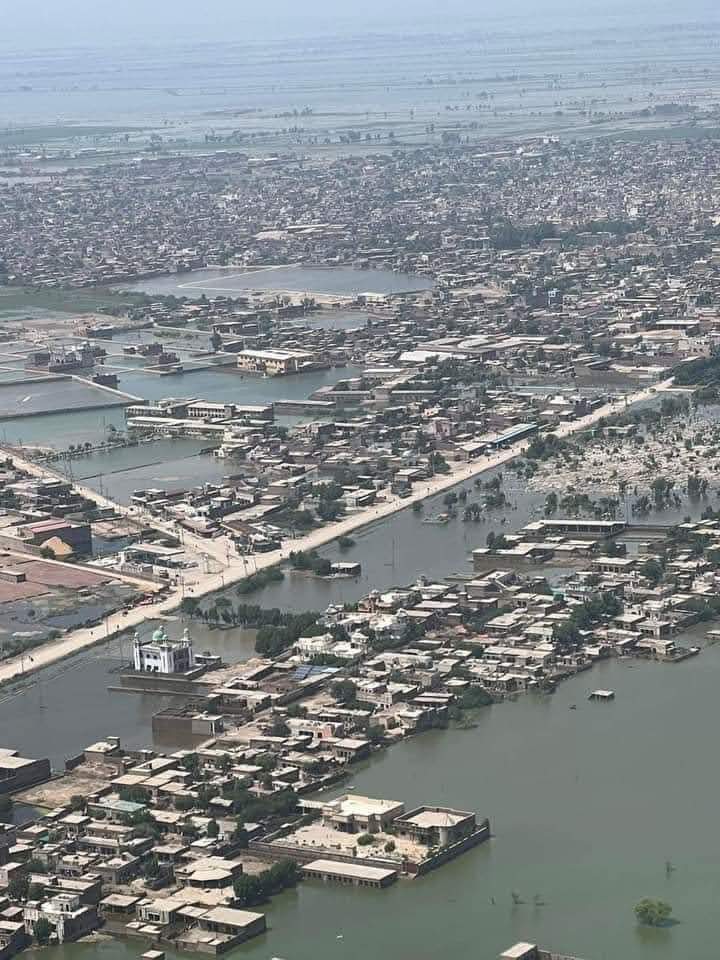 According to official data released by the federal and provincial authorities, the exceptionally heavy monsoon rains that triggered flash floods across the country affected over ten million Pakistanis, damaged millions of homes and killed around 1500 people. The flash floods destroyed more than 150 bridges, dozens of small dams while numerous roads were washed away. Many highways are still inundated and the train service remains suspended for over a month due to damage to the railway tracks that have cut off various regions from each other. This year’s devastation is worse than that of 2010, when floods killed 1,700 people, as the material loss is so big that the country may take years to recover.
According to official data released by the federal and provincial authorities, the exceptionally heavy monsoon rains that triggered flash floods across the country affected over ten million Pakistanis, damaged millions of homes and killed around 1500 people. The flash floods destroyed more than 150 bridges, dozens of small dams while numerous roads were washed away. Many highways are still inundated and the train service remains suspended for over a month due to damage to the railway tracks that have cut off various regions from each other. This year’s devastation is worse than that of 2010, when floods killed 1,700 people, as the material loss is so big that the country may take years to recover.
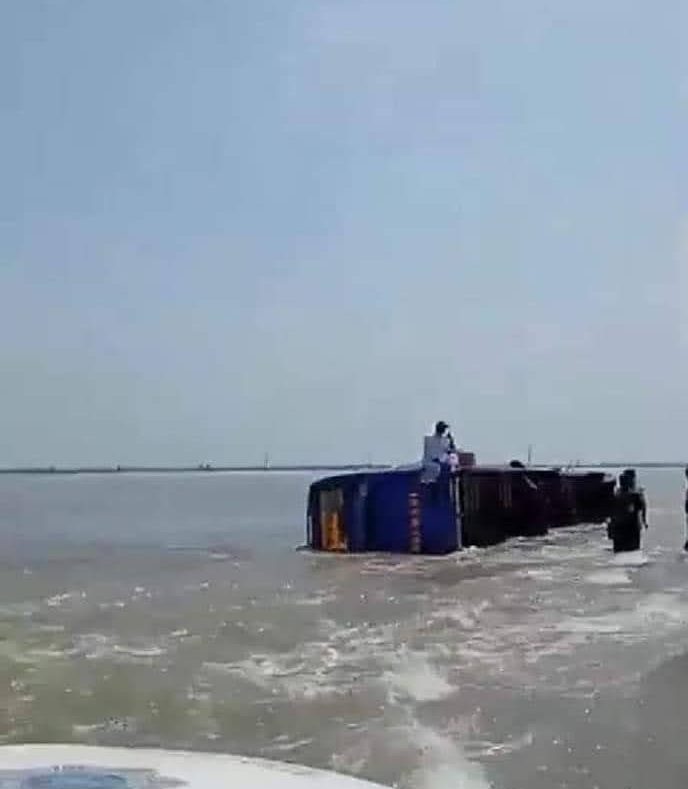
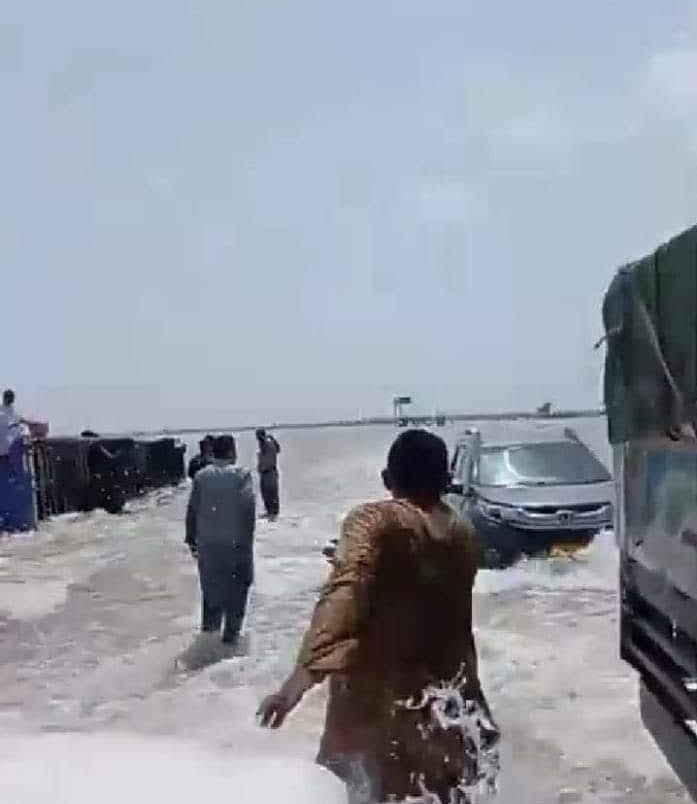
Although, the flash floods have ravaged vast areas of the country, especially the Sindh province, Balochistan province and the southern region of Punjab province, but the Sindh province is worst affected, as according to official data, released by provincial authorities, o.5 million acres of standing crops have been destroyed due to floods and rains in the province, including valuable crops of cotton, rice, vegetables as well as date gardens which has caused a huge loss in exports, and food shortage resulting in hundred percent hike in prices of essential commodities.
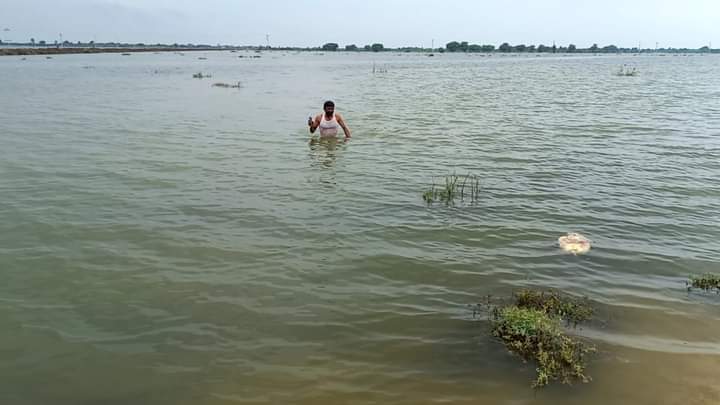
In Sindh alone more than 700 people lost their lives including 207 children and 102 women, while 21891 people sustained injuries. The death toll continues rising as several casualties are being reported due to outbreak of water-borne diseases. Some two hundred thousand cattle heads also perished in the recent disaster. Some 570 roads of 2,281.5 millimeter roads in length were destroyed, 22000 school buildings and 1200 hospital buildings were damaged. Around 1.5 million houses were affected, of which 556120 have been completely destroyed, while the rest were partially damaged but not livable due to cracks in them. However, only a few hundred thousand people had been shifted to relief camps, tent village etc. while others are still living under open sky at roadsides and canal banks. The relief camps with provision of food, were mostly arranged by non-government welfare organizations and philanthropists, as the governments miserably failed even to ensure provision of tents, food etc. donated by other countries, as reportedly thousands of tents, mosquito nets, ration bags and other material were stolen by the ruling party’s members, feudal lords and even by the members of parliament and provincial assembly. It has been reported that so far 120 planes carrying relief goods from different countries landed here but hardly five percent of it reached to the displaced persons.
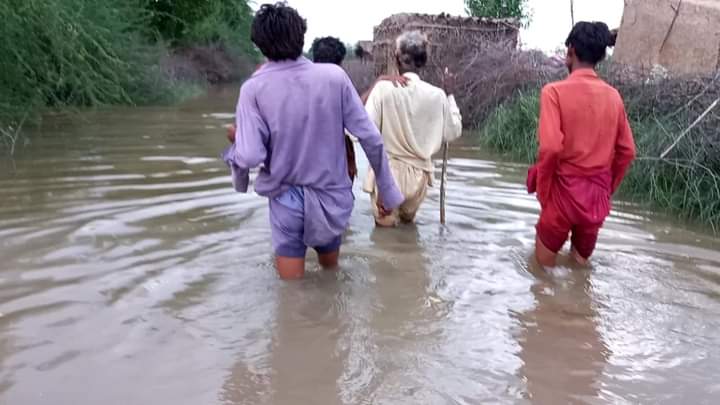
The painful story doesn’t end here.
After the flash floods, the Indus River that had swelled up, had posed serious threat of inundating towns and villages, highways, agriculture fields etc. in case of breaches in its embankments. The river discharge was measured 0.5 to 0.6 cusecs at different barrages. It was feared that the flow would further increase but fortunately, the water level started receding soon. However, the people of several towns located on the right bank or the western side of Indus River had to flee overnight for fear of deluge.
It was something different to ravage the province further. As Sindh continued to reel under the worst floods in living memory for weeks that had knocked down cellphone towers, bridges and power lines, ‘it was the gushing water of hill torrents from Balochistan province that brought more destruction inundating several major towns and hundreds of small villages’, as had been reported to the provincial government in a meeting by the officials of irrigation department. The people of western part of Sindh were stunned on such statement, as the hill torrents too were nothing new, and it always happened during monsoon rains, but ended up in Indus River and Manchhar Lake, one of the biggest lakes of Asia, passing through natural waterways. The British rulers of Sindh and some later governments too had built protective embankments to save the towns and villages, therefor it was out of question that hill torrents inundated the vast area of over one hundred kilometers turning it into a new big lake. A large portion of Indus Highway, which connects Sindh to Khyber Pakhtunkhaw province, als came under this ‘new lake’.
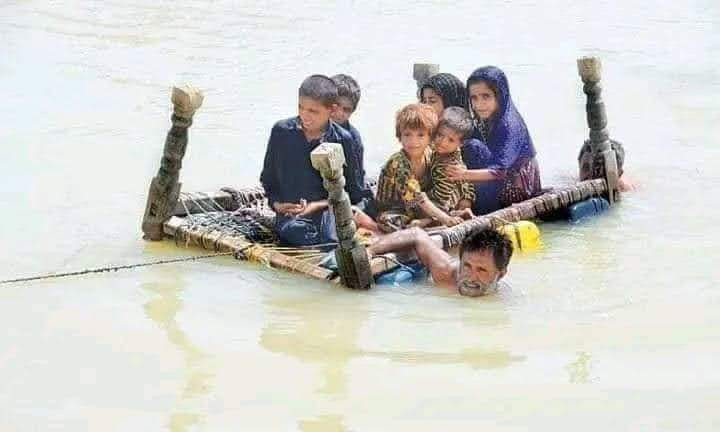
The people had suspected some mischief, and it proved true. It has been reported that in order to save the agricultural lands of feudal lords of ruling party in Sindh – Pakistan People’s Party, and other influential persons, the artificial cuts were made in the protective embankments and the Manchhar Lake, to divert the flood water, as they feared that continuous flow of hill torrents would inundate their fields. The statement of Syed Murad Ali Shah, the Chief Minister of Sindh was of big surprise for the people wherein he had announced that ‘the officials of irrigation department have been authorized to decide where the cuts in the embankments should be made.”
The irrigation department made more than half a dozen cuts in the protective embankments and the Manchhar Lake, and inundated some big towns and hundreds of villages. They are still under water.
Destruction in Eastern Region
The same cause was behind the deluge and destruction on left bank of Indus River or the eastern part of Sindh. The feudal lords of ruling party, other influential persons including some bureaucrats had blocked the natural waterways including the dried up old courses of some ancient rivers by developing fish ponds and agriculture farms. It happened that at some places torrential rainwater overflowed the fishing lakes and at some other, the rainwater found some alternate ways and inundated the hundreds of villages.
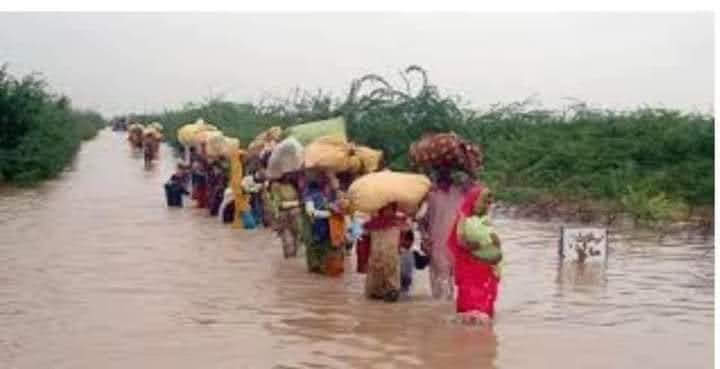
Another source of destruction was Left Bank Outfall Drain, a saline water drain built to drain out the saline water of Punjab and Sindh provinces into sea. Owing to its faulty design and very low capacity, it always deluged the vast area in lower Sindh districts during the monsoon season. Same happened this year.
The misappropriation of billions of rupees allocated every year for de-silting the canals and watercourses is also one of the major reasons behind the deluge.
Poverty, Illiteracy, Ill-Planning and Unpreparedness are some of the other reasons that always bring miseries to the people on either sides of River Indus in Sindh. The majority of people in villages and small towns cannot afford to build baked-brick houses. The illiteracy too plays role as the people do not know how to be resilient, while lack of town planning, absence of storm water drains and even the sewerage system in entire province causes the deluge.
I would end my note that the man-made disasters are extreme hazardous events that are caused by human beings.
______________
Courtesy: The AsiaN, Seoul, Republic of Korea (Published on September 23, 2022)